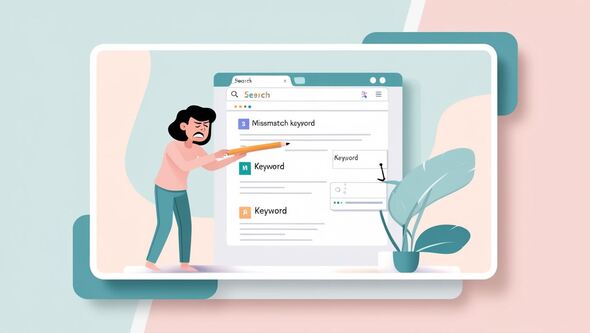Table of Contents
As a solopreneur, getting your website to rank higher on Google can feel like an uphill battle—especially if you're working with a limited budget. While link-building is one of the most effective ways to improve your search engine rankings, it often gets dismissed as a strategy only large businesses can afford. But here's the good news: with a little creativity and persistence, you can implement powerful DIY link-building strategies that won't break the bank.
This guide will walk you through practical, actionable tactics tailored for solopreneurs looking to boost their Google rankings and grow their online presence.
Why Link-Building Matters for SEO
Backlinks—links from other websites to yours—are one of the top ranking factors for search engines like Google. They act as endorsements of your site’s content, signaling to Google that your website is trustworthy and valuable within its niche. The more high-quality backlinks you have, the better your chances of ranking higher in search results.
However, not all backlinks are created equal. Focusing on building natural, authoritative, and relevant links is key to staying on Google’s good side while avoiding penalties associated with spammy or purchased links.
Common Challenges Solopreneurs Face in Link-Building
Before diving into strategies, let’s acknowledge the obstacles:
- Limited Budget: Hiring agencies or buying links is often out of reach.
- Time Constraints: Balancing link-building with running your business can be tough.
- Lack of Technical Expertise: Understanding SEO jargon and tools can feel overwhelming.
8 Budget-Friendly Link-Building Strategies
These DIY approaches are tailored to solopreneurs who need impactful results without spending big.
1. Leverage Guest Posting
Guest posting remains one of the most effective ways to build quality backlinks. For solopreneurs, it offers a unique opportunity to showcase their expertise, build authority in their niche, and expand their audience without significant financial investment.
For example, a freelance graphic designer once published a guest post on a popular design blog, sharing actionable tips for beginners. The post not only drove significant traffic to their portfolio but also earned them valuable backlinks from readers who referenced the article on their own blogs.
Here's how:
- Identify Target Blogs: Use tools like Ahrefs or Google search operators (e.g., "your niche + write for us") to find blogs in your industry.
- Craft Tailored Pitches: Send personalized outreach emails explaining how your expertise can add value to their audience.
- Create High-Quality Content: Ensure your guest posts include actionable tips or insights to build credibility and increase the likelihood of being published.
2. Create Linkable Assets
Offer content so valuable that other websites want to link to it.
For example, a marketing blog once published a well-researched infographic about the evolution of SEO, which was widely shared and cited by industry experts. Similarly, a fitness coach created a detailed guide on beginner workout routines that became a go-to resource, earning links from popular health and lifestyle websites.
Examples include:
- Infographics: Use free tools like Canva to create visually appealing infographics that summarize complex information. Infographics are highly shareable and easy for other websites to embed, making them great for backlinks.
- Resource Guides: Compile comprehensive how-to guides or toolkits. These detailed resources often serve as references, encouraging other sites to link back.
- Original Research: Share unique data or survey results from your industry. Original data adds credibility and attracts backlinks from professionals citing your findings.
3. Broken Link-Building
This strategy involves identifying broken links on other websites and offering your content as a replacement.
For example, when reaching out to the site owner, you might write something like: "Hi [Name], I noticed that the link to [broken link resource] on your site is no longer active. I recently created a similar resource that your readers might find valuable. Here’s the link: [your resource link]. Let me know if you’d like any additional information!"
This approach is both helpful and non-intrusive.
- Find Broken Links: Use tools like Ahrefs or Check My Links (a Chrome extension) to identify broken links.
- Contact the Site Owner: Politely inform them of the broken link and suggest your relevant content as a replacement.
4. Engage in Online Communities
Being active in forums, groups, and social media communities can help you build relationships and backlinks over time.
- Platforms to Explore: Reddit, Quora, niche-specific forums, and LinkedIn groups.
- Best Practices: Share insights and solutions genuinely. Avoid spamming links; focus on adding value.
5. Get Listed in Directories
Online directories can be a goldmine for local SEO and niche backlinks.
- Claim Local Listings: Ensure your business is listed on platforms like Google My Business, Yelp, and Bing Places.
- Niche Directories: Look for directories relevant to your industry (e.g., wedding vendor directories if you’re a photographer).
6. Repurpose Existing Content
Turn your existing blog posts into different formats to attract more backlinks.
- Create Slide Decks: Share them on SlideShare.
- Make Short Videos: Upload to YouTube and embed them in your articles.
- Convert to Infographics: Share on Pinterest and other visual platforms.
7. Use HARO (Help a Reporter Out)
HARO connects journalists with sources for their stories. By signing up, you can respond to requests and potentially get featured in high-authority publications.
For example, solopreneurs in health and wellness could respond to queries about fitness trends or healthy living tips, showcasing their expertise while earning valuable backlinks.
- How It Works: Create a free account and monitor queries related to your expertise.
- Pro Tip: Respond quickly and keep your pitches concise to increase your chances of being featured.
8. Ask for Backlinks
Sometimes, the simplest approach works best. Reach out to your existing network:
- Collaborators: Ask partners or collaborators to link to your site. Highlight how this partnership could enhance their content by linking to a valuable resource.
- Suppliers and Vendors: Request backlinks from their resources or partner pages, emphasizing the mutual benefits of increasing visibility for both parties.
Tools to Simplify DIY Link-Building
While these strategies are DIY-friendly, the right tools can streamline the process:
- Ahrefs or Ubersuggest: For keyword and backlink research.
- Canva: To create graphics and visual content.
- BuzzStream: To manage your outreach campaigns.
- Check My Links: A Chrome extension to find broken links.
- Google Search Console: To monitor your backlink profile.
Avoid These Link-Building Mistakes
- Buying Links: Paid links may lead to Google penalties.
- Using Low-Quality Directories: Focus on reputable, niche-specific directories.
- Spamming Comments: Avoid dropping links in irrelevant blog comments.
- Prioritizing Quantity Over Quality: A few high-quality backlinks are far more valuable than dozens of low-quality ones.
Measuring Your Success
Tracking your progress is essential to see what works and refine your strategy:
- Monitor Backlink Growth: Use tools like Google Search Console or Ahrefs.
- Track Rankings: Observe how your target keywords perform in search results.
- Analyze Referral Traffic: Check Google Analytics to see which backlinks drive the most traffic.
Final Thoughts
Building quality backlinks doesn’t have to drain your budget or overwhelm your schedule. Start with one or two strategies from this guide and commit to consistent effort. Even small, steady progress can lead to significant results over time. By focusing on these practical, budget-friendly strategies, you can steadily improve your Google rankings and drive more organic traffic to your website.
Ready to take the first step? Pick one strategy from this guide and implement it today. With persistence and effort, your link-building efforts will pay off—one link at a time.
Read to next step?
Achieve Digital Marketing Success
Effortless Digital Marketing Analytics with goalskeeper.io
Start Free Trial





